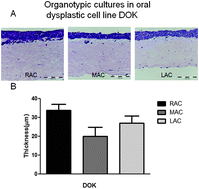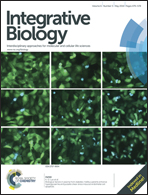Human oral cancer cells with increasing tumorigenic abilities exhibit higher effective membrane capacitance
Abstract
Objective: Although cells with tumorigenic/stem cell-like properties have been identified in many cancers, including oral squamous cell carcinoma (OSCC), their isolation and characterisation is still at early stages. The aim of this study is to characterise the electrophysiological properties of OSCC cells with different tumorigenic properties in order to establish if a correlation exists between tumorigenicity and cellular electrical characteristics. Materials and methods: Rapid adherence to collagen IV was used as a non-invasive, functional method to isolate subsets of cells with different tumorigenic abilities from one oral dysplastic and three OSCC-derived cell lines. The cell subsets identified and isolated using this method were further investigated using dielectrophoresis, a label-free method to determine their electrophysiological parameters. Cell membrane morphology was investigated using scanning electron microscopy (SEM) and modulated by use of 4-methylumbelliferone (4-MU). Results: Rapid adherent cells (RAC) to collagen IV, enriched for increased tumorigenic ability, had significantly higher effective membrane capacitance than middle (MAC) and late (LAC) adherent cells. SEM showed that, in contrast to MAC and LAC, RAC displayed a rough surface, extremely rich in cellular protrusions. Treatment with 4-MU dramatically altered RAC membrane morphology by causing loss of filopodia, and significantly decreased their membrane capacitance, indicating that the highest membrane capacitance found in RAC was due to their cell membrane morphology. Conclusion: This is the first study showing that OSCC cells with higher tumour formation ability exhibit higher effective membrane capacitance than cells that are less tumorigenic. OSSC cells with different tumorigenic ability possessed different electrophysiological properties mostly due to their differences in the cell membrane morphology. These results suggest that dielectrophoresis could potentially used in the future for reliable, label-free isolation of putative tumorigenic cells.


 Please wait while we load your content...
Please wait while we load your content...